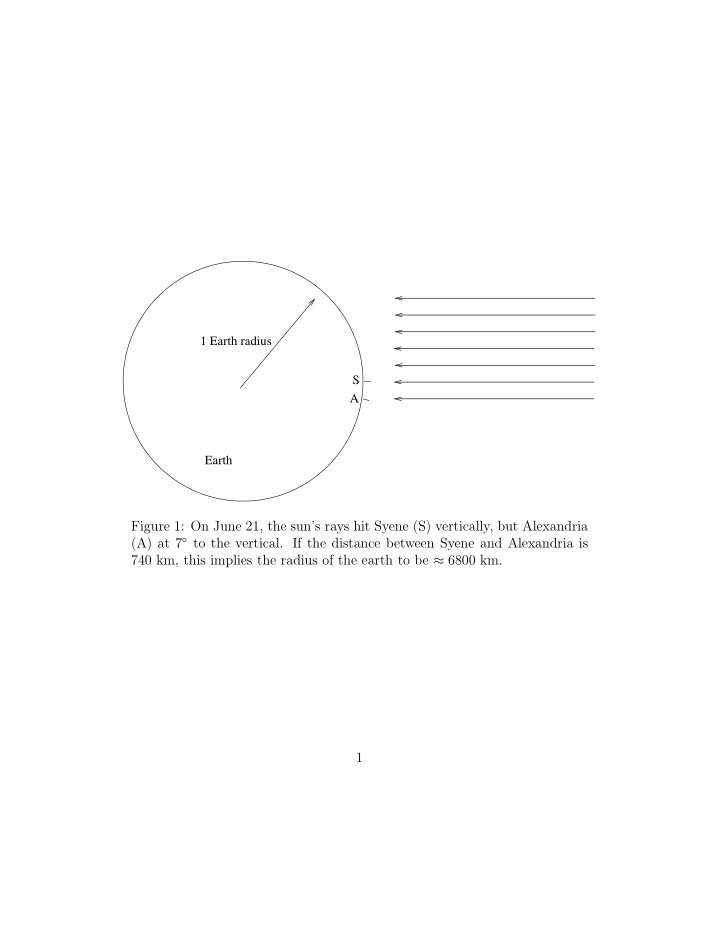



1 Earth radius S A Earth Figure 1: On June 21, the sun’s rays hit Syene (S) vertically, but Alexandria (A) at 7 ◦ to the vertical. If the distance between Syene and Alexandria is 740 km, this implies the radius of the earth to be ≈ 6800 km. 1
Moon Earth Earth’s shadow 2 Earth radii Figure 2: If the sun is far away, then the Earth’s shadow is two Earth radii across. If the moon takes three hours to traverse this shadow, and one month to orbit the Earth, then the distance from the moon to the earth is ≈ 60 Earth radii. 2
Full moon New moon Sun Earth Half moon Figure 3: A half moon occurs when the moon makes a right angle between the earth and the sun. Thus half-moons occur slightly earlier than the midpoint between a new moon and full moon. Knowing the value of this delay, and knowing the distance to the moon, one can deduce the distance to the sun (the astronomical unit). 3
Earth at time T Mars at time T and at time T+687 Sun Earth at time T+687 Figure 4: At time T and T +687, Mars is in the same location, while the Earth has moved. Measuring the position of the sun and Mars against the fixed stars at those times, one can then place the Earth relative to the location of Mars. Repeating this gives the orbit of the Earth relative to Mars; a reverse procedure then gives the orbit of Mars relative to Earth. 4
Mars A Earth B Figure 5: By travelling to distant points in the earth, and given sufficiently accurate measurements of time, angle, and radius of the earth, one can com- pute distances to planets such as Mars by more direct and accurate means than by Kepler’s method. Sun Earth Earth 2 AU Io orbiting Jupiter Figure 6: When the Earth is opposite Jupiter, light from Io must travel an additional 2AU than when Earth is aligned with Jupiter. From measuring the delay in Io’s orbit caused by this effect, and by knowing the distance from the earth to the sun, one can solve for the speed of light. 5
Earth in January 2 AU Sun Sirius Earth in July Figure 7: By measuring angles at times six months apart, one has enough parallax to compute distances to nearby stars (e.g. Sirius) in terms of the astronomical unit. 6
Recommend
More recommend